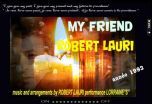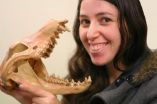(Press-News.org) A new hi-tech £1million-plus non-invasive disease detection facility, developed by the University of Leicester, has been unveiled today (Sept 1st 2011) for use in Leicester Royal Infirmary's A&E department.
It is designed to detect the "sight, smell and feel" of disease without the use of invasive probes, blood tests, or other time-consuming and uncomfortable procedures.
Scientists use three different types of cutting-edge technology in combination under a range of situations. All the methods are non-invasive, and could speed up diagnosis.
Scientists have surrounded a normal hospital bed with an unprecedented array of technology to examine patients:
One group of instruments (developed in the University's Chemistry Department) analyses gases present in a patient's breath.
A second uses imaging systems and technologies - developed to explore the universe - to hunt for signs of disease via the surface of the human body.
The third uses a suite of monitors to look inside the body and measure blood-flow and oxygenation in real-time.
The technologies employed in the new Leicester Diagnostics Development Unit have never previously all been used in an integrated manner and with such a large pool of patients.
University of Leicester researchers from space research, emergency medicine and Chemistry, worked with colleagues in Cardiovascular Sciences, Infection, Immunity and Inflammation, Physics and Astronomy, Engineering, IT Services and the Leicester Royal Infirmary to create the Unit.
Some of the technology in the new Unit has been originally developed for use in planetary research: – in the year 2019, an international space probe is scheduled to arrive on Mars to look for life and will employ similar technologies. Some of the advanced technology and science behind the unit was developed at the University of Leicester.
Appropriately for something that comes from outer space, the technology might also be a first step towards ultimately developing devices akin to the 'tricorders' from Star Trek -- used by medics in the sci-fi series to diagnose illness simply by waving it near a patient, according to Professor Mark Sims, the University of Leicester space scientist who led the project alongside Tim Coats, Professor of Emergency Medicine at the University and head of accident and emergency at the Royal Infirmary.
Professor Sims said: "We are replacing doctors' eyes with state-of-the-art imaging systems, replacing the nose with breath analysis, and the "feel of the pulse" with monitoring of blood flow using ultra sound technology and measurement of blood oxygen levels.
"In the old days, it used to be said that a consultant could walk down a hospital ward and smell various diseases as well as telling a patient's health by looking at them and feeling their pulse. What we are doing is a high tech version of that in order to help doctors to diagnose disease."
Many diseases have visible effects that can be measured outside the body, whether it is a change in colour, temperature, or what organic compounds we breath out or a combination of them alongside changes in the cardio-vascular system e.g. pulse rate, blood oxygenation level. The equipment, it is hoped, can be used in diagnosis of a wide range of diseases from things like sepsis through to bacterial infections such as C. Difficile and some cancers. The Diagnostics Development Unit has identified over 40 possible applications to date.
Explaining how the project came about, Professor Sims said: "We are developing a device called the Life Marker Chip for the ExoMars space mission. It will look for organic molecules in samples from below the surface of Mars, helping to answer a question that has been fascinating mankind for many years, is there Life today or was there Life in the past on that planet? Developing it has involved both space technology and biology. The project therefore brought us into contact with health organisations and associated technology and helped lead to this initiative."
The researchers are using a £500,000 infrastructure grant from the Higher Education Funding Council along with a contribution from the University to equip the Unit.
Professor Sims explains that human breath contains a range of by-products (so-called volatile organic compounds) from bodily processes. Identified by an novel instrument called a real-time mass spectrometer, they can provide clues to a wide range of diseases. He says: "An obvious example is ketones, which we detect in the breath of diabetics during hypoglycaemia. But there are also chemicals that can or could be used to indicate conditions such as asthma, sepsis, liver disease, heart disease, and several types of cancer." While gases in the breath are the main focus, the same technology can be used to analyse urine and faeces.
Sepsis is especially interesting as a target because it is hard to detect at an early stage and is a considerable burden on the NHS and is expected to exhibit a number of different effects on the body that can be detected by the combined instrumentation.
Space technology is behind the imaging equipment used to gather information from patients, using visible light wavelengths as well as invisible infra-red light.
It includes a thermal imager to see patients' surface and core temperatures by imaging appropriate targets on the body. Comparing the two temperatures can reveal disease because one response to illness is to withdraw blood from peripheral parts of the body.
Other devices (multi-spectral and hyper-spectral imagers) can detect subtle changes in skin colour. Liver disease is associated with yellowing of the skin and it is possible that this equipment could detect it before it is readily visible to the human eye. Imaging technology can also see veins close to the surface of the skin inside the body and detect whether the blood contains enough oxygen is or oxygen-poor and whether circulation in the extremities is shutting down due to medical shock etc. Also early stage bruising and skin cancers should be detectable.
Some of the monitoring equipment, for example the cardio-vascular monitors surrounding the bed, are already in use but, Professor Sims says, they are rarely combined in such a comprehensive way - normally only one such type of monitor is used at a time. Even though nearly all the technologies employed in the Unit have been used in one way or another, they have never all been used in an integrated manner and with a large pool of patients.
"Ultimately in the longer term we would aim to work towards something like the "tricorder" device seen in futuristic science series like Star Trek. What we are developing so far is more like a first attempt at the medical bed in the sci-fi series," he said.
According to Professor Coats, early disease detection often leads to better outcomes. This technology could make for quicker and more patient-specific diagnoses.
He says: "I am a specialist in emergency medicine and we are starting the project in this area. But it could also be valuable elsewhere in hospitals and in GP surgeries and perhaps even in a future generation of ambulances. We are talking to industrial partners who might get involved in commercialising this work as the project matures."
Professor Sims added: "It is hard to predict how this work will develop. But ten years from now it could be routine for diagnostic technology to be combined in this way."
###
More information at:
www.le.ac.uk/ddu
What will the DDU do:
http://www2.le.ac.uk/departments/cardiovascular-sciences/research/population-research-and-clinical-trials/emergency-medicine-group/research/illness-identification/ddu-leicester/ddu-what-it-does
A PDF describing the Diagnostics Development Unit is available; e-mail pressoffice@le.ac.uk to request it.
A separate press notice/Media Invite for this event is available via pressoffice@le.ac.uk
Ather Mirza
Press Office
Division of Corporate Affairs and Planning
University of Leicester
Tel: 0116 252 3335
Email: pressoffice@le.ac.uk
Twitter: @UniofLeicsNews
For access to Hospital site, please inform:
Laura Dennis
Communications Manager
University Hospitals of Leicester NHS Trust
Tel: 0116 258 8644
Email: laura.dennis@uhl-tr.nhs.uk
Higher Education Funding Council for England
The Higher Education Funding Council for England (HEFCE) promotes and funds high-quality, cost-effective teaching and research to meet the diverse needs of students, the economy and society. HEFCE develops policies, distributes funds, safeguards quality and assures the proper stewardship of public money. For the academic year 2011-12, HEFCE will distribute £6,507 million of public money to 130 universities and higher education colleges, and 124 directly funded further education colleges. www.hefce.ac.uk
Leicester scientists deploy space-age technologies at science-fiction style 'sick bay'
Medical diagnosis -- but not as we know it!
2011-09-01
ELSE PRESS RELEASES FROM THIS DATE:
Robert Lauri: Discovery of Unreleased Timeless Musical Creations
2011-09-01
Robert Lauri reveals a new window of his musical creativity by now offering listeners some previously unreleased timeless melodies... all of them simply stunning.
The artist introduces us to some of the songs performed in English by Lorraine S'. All of his melodies and arrangements offer an opportunity for today's artists and performers.
For example, Robert Lauri first introduces us to the selections My Friend, Promised Land and Sunset. Wix widgets will be shared on Robert Lauri's social networking sites as well as on his music sites.
During his long musical ...
Tasmanian tiger's jaw was too small to attack sheep, study shows
2011-09-01
Australia's iconic thylacine, or Tasmanian tiger, was hunted to death in the early Twentieth century for allegedly killing sheep; however, a new study published in the Zoological Society of London's Journal of Zoology has found that the tiger had such weak jaws that its prey was probably no larger than a possum.
"Our research has shown that its rather feeble jaw restricted it to catching smaller, more agile prey," said lead author Marie Attard, of the University of New South Wales Computational Biomechanics Research Group. "That's an unusual trait for a large predator ...
Hubble movies provide unprecedented view of supersonic jets from young stars
2011-09-01
Stars aren't shy about sending out birth announcements. They fire off energetic jets of glowing gas travelling at supersonic speeds in opposite directions through space.
Although astronomers have looked at still pictures of stellar jets for decades, now they can watch movies, thanks to the NASA/ESA Hubble Space Telescope.
An international team of scientists led by astronomer Patrick Hartigan of Rice University in Houston, USA, has collected enough high-resolution Hubble images over a 14-year period to stitch together time-lapse movies of young jets ejected from three ...
Smoking after menopause may increase sex hormone levels
2011-09-01
A recent study accepted for publication in The Endocrine Society's Journal of Clinical Endocrinology & Metabolism (JCEM) found that postmenopausal women who smoke have higher androgen and estrogen levels than non-smoking women, with sex hormone levels being highest in heavy smokers.
Previous studies have shown that high levels of estrogens and androgens are potential risk factors for breast and endometrial cancer as well as type 2 diabetes. Cigarette smoking is a well established risk factor for chronic diseases such as cancer, cardiovascular disease and diabetes, but ...
Hot flashes may be fewer in older, heavier women
2011-09-01
A recent study accepted for publication in The Endocrine Society's Journal of Clinical Endocrinology & Metabolism (JCEM) found that among women aged 60 and above, heavier women have fewer hot flashes than their leaner counterparts. The inverse association between body size and hot flashes was observed only among the older women.
In the last decade, research on perimenopausal women has shown that heavier women tend to have more hot flashes. As a result of this research, clinicians began to observe obesity as a risk factor for hot flashes. However, according to this new ...
Podiatrist in Lancaster Enhances Practice Through Online Social Media Accounts
2011-09-01
Dr. Thomas Neuman, podiatrist in Lancaster and Northridge, has recently launched the practice's social media websites - Facebook and Twitter. These social media channels were set up to maintain a superior level of communication and interaction with patients at any point during the day. Patients can now access more personalized information, as well as learn more about other patients' experiences with Dr. Neuman.
"My patients use the Internet more and more these days, including sharing information and interacting with other patients on popular social media websites. ...
Not all care homes are bad, argues expert
2011-09-01
Many care homes provide first rate care, despite relentless negative media coverage, argues an expert on bmj.com today.
Graham Mulley, Emeritus Professor of Elderly Care at the University of Leeds, calls on the media and high profile individuals to "balance the prevailing nihilism" and celebrate all the excellent work that is taking place in many care homes.
His views come after he was asked to be a consultant adviser for an undercover television exposé of nursing homes.
Media reporting of care homes is rarely positive, he writes, yet the latest report from the Care ...
Cosmetic Dentist in West Orange Offers Advanced Dental Treatment with Laser Dentistry
2011-09-01
New Jersey top dentist, Dr. Ivan Stein of Northfield Dental Group, is treating patients with more precision and efficiency with recent advancements in dental technology. New laser devices enable Dr. Stein to provide the best possible care in his Livingston office.
Laser dentistry is a form of dentistry that allows for the treatment of highly specific areas by laser without damaging the surrounding tissues. For years lasers have been used in dentistry to treat a number of dental problems and they continue to improve and grow in popularity.
"The use of lasers ...
A high-tech propulsion system for the next 100 years
2011-09-01
One of the most efficient means of transporting freight is by ship. However, many of the ships sailing today are powered by ageing diesel motors fitted with neither exhaust cleaning equipment nor or modern control systems. Three years ago the University of Birmingham initiated an ambitious trial, converting an old canal barge to use hydrogen fuel. The old diesel motor, drive system and fuel tank were removed and replaced with a high efficiency electric motor, a battery pack for short-term energy supply and a fuel cell with a hydrogen storage system to charge the batteries. ...
Mobile phone data in Haiti improves emergency aid
2011-09-01
Population movements in the wake of disasters make it difficult to deliver the right amount of humanitarian aid to the right places. During the earthquake and ensuing cholera epidemic in Haiti, researchers at Karolinska Institutet, Sweden, and Columbia University, USA, developed a new method for solving this problem – they monitored the continual movements of two million anonymous mobile phones and reported directly to the humanitarian relief organisations on the ground. The method, which is now presented in the scientific journal PLoS Medicine, may have a major impact ...
LAST 30 PRESS RELEASES:
Scientists to ‘spy’ on cancer- immune cell interactions using quantum technology breakthrough
Tech savvy users have most digital concerns
Making lighter work of calculating fluid and heat flow
Normalizing blood sugar can halve heart attack risk
Lowering blood sugar cuts heart attack risk in people with prediabetes
Study links genetic variants to risk of blinding eye disease in premature infants
Non-opioid ‘pain sponge’ therapy halts cartilage degeneration and relieves chronic pain
AI can pick up cultural values by mimicking how kids learn
China’s ecological redlines offer fast track to 30 x 30 global conservation goal
Invisible indoor threats: emerging household contaminants and their growing risks to human health
Adding antibody treatment to chemo boosts outcomes for children with rare cancer
Germline pathogenic variants among women without a history of breast cancer
Tanning beds triple melanoma risk, potentially causing broad DNA damage
Unique bond identified as key to viral infection speed
Indoor tanning makes youthful skin much older on a genetic level
Mouse model sheds new light on the causes and potential solutions to human GI problems linked to muscular dystrophy
The Journal of Nuclear Medicine ahead-of-print tip sheet: December 12, 2025
Smarter tools for peering into the microscopic world
Applications open for funding to conduct research in the Kinsey Institute archives
Global measure underestimates the severity of food insecurity
Child survivors of critical illness are missing out on timely follow up care
Risk-based vs annual breast cancer screening / the WISDOM randomized clinical trial
University of Toronto launches Electric Vehicle Innovation Ontario to accelerate advanced EV technologies and build Canada’s innovation advantage
Early relapse predicts poor outcomes in aggressive blood cancer
American College of Lifestyle Medicine applauds two CMS models aligned with lifestyle medicine practice and reimbursement
Clinical trial finds cannabis use not a barrier to quitting nicotine vaping
Supplemental nutrition assistance program policies and food insecurity
Switching immune cells to “night mode” could limit damage after a heart attack, study suggests
URI-based Global RIghts Project report spotlights continued troubling trends in worldwide inhumane treatment
Neutrophils are less aggressive at night, explaining why nighttime heart attacks cause less damage than daytime events
[Press-News.org] Leicester scientists deploy space-age technologies at science-fiction style 'sick bay'Medical diagnosis -- but not as we know it!


